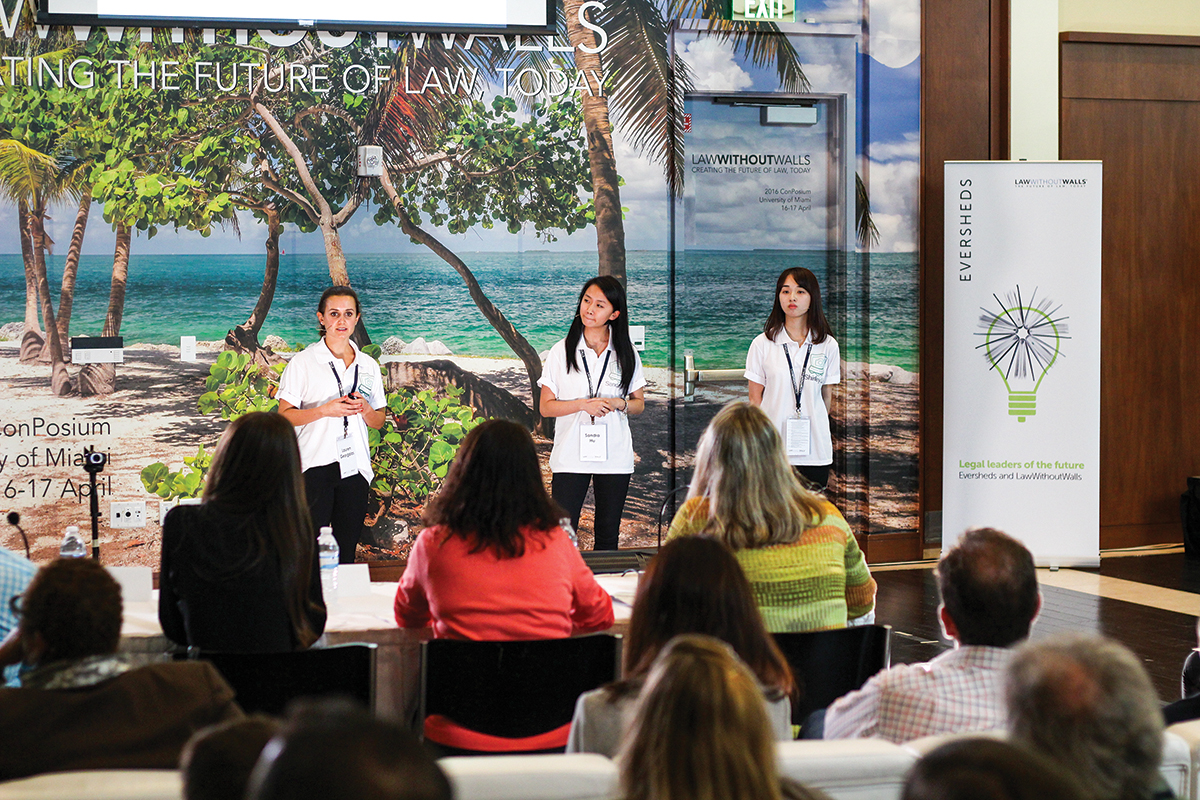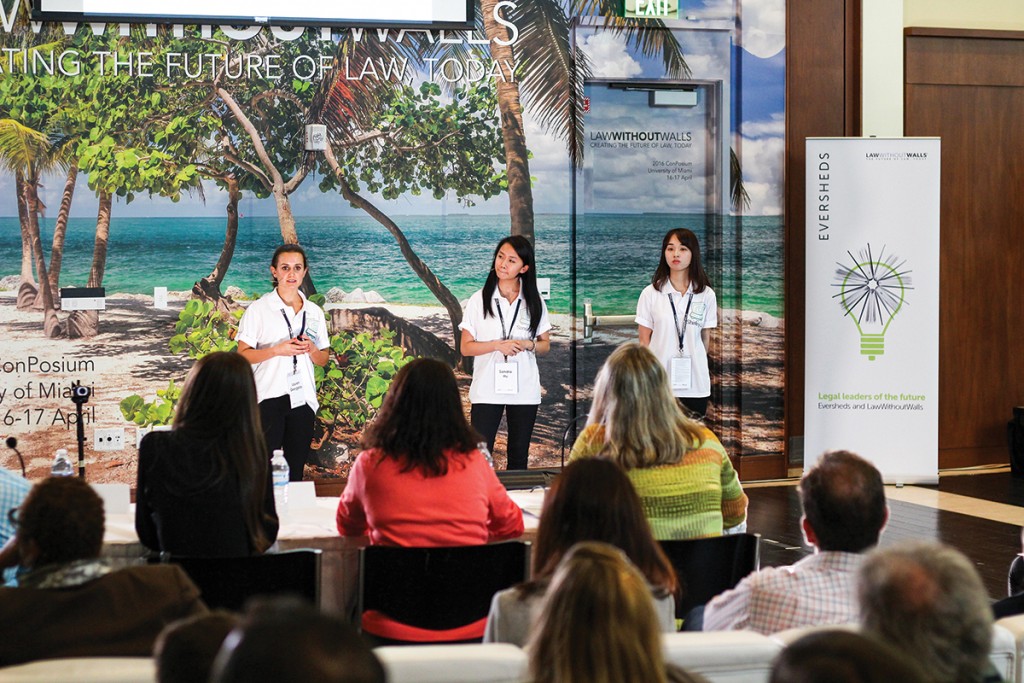

Teams of graduate law and business students from around the world presented legal projects that they worked on over the course of four months for the LawWithoutWalls “ConPosium” this weekend at the Newman Alumni Center.
Students from all over the world met in Madrid, Spain four months ago and brainstormed practical innovations to address problems in law in preparation for the ConPosium this weekend. Then they flew back to their respective home countries and worked on their projects for four months, communicating with each other through video calls.
One such team was a European trio whose innovation was called “Caspecto.” Caspecto uses artificial intelligence to analyze variables that characterize a particular legal question (like slipping on a banana peel in a grocery store, for example) and compares them to a pool of past legal cases, generating a report with such information as the likelihood of winning and the compensation one may receive.
“It’s reducing the uncertainty you feel when you have an accident or any issue that may be worthy of bringing to court; it tells you what are your real chances, in practice, based on what has happened before in court,” said Santiago Menéndez, a Spanish member of the team. “It helps you a make a very informed decision.”
With Caspecto, you actually can see if you should go and talk to a lawyer,” said Andri Björgvin Arnthorsson, a team member from Iceland. “The likelihood of succeeding might be 30 percent … it probably won’t pay off, so you don’t have to go through the hassle and you don’t have to think about it anymore … Or, if you’re in the higher end of the grey area, maybe 70 percent, then you can take that case to a lawyer … and find the best way to succeed. Simple, easy and effective.”
A large factor in the team’s success came from its unity, according to Goektug Guerbuez, the third group member.
“Everybody should know everything about the project so that we can stand in front of the jury as a group. That’s why we always worked together in every step of the proceedings,” said Goektug, who lives in Switzerland but is of Turkish descent.
The word “Caspecto” comes from a combination of the words “case” and the Latin word “specto,” meaning “to expect;” that is, Caspecto tells potential litigants what they can expect in a law case.
Another team presented an innovative privacy application called “Photoguard.” The group, with members from Australia and China, developed a software platform that uses image-recognition software to detect nude images and protect social media users from potential backlash.
“Our goal is to educate, prevent and protect,” said Lauren Georgaias, a member of the Photoguard team.
The conference had a host of big-name sponsors including Microsoft, Lockheed Martin, LegalZoom and Diversity Lab.






